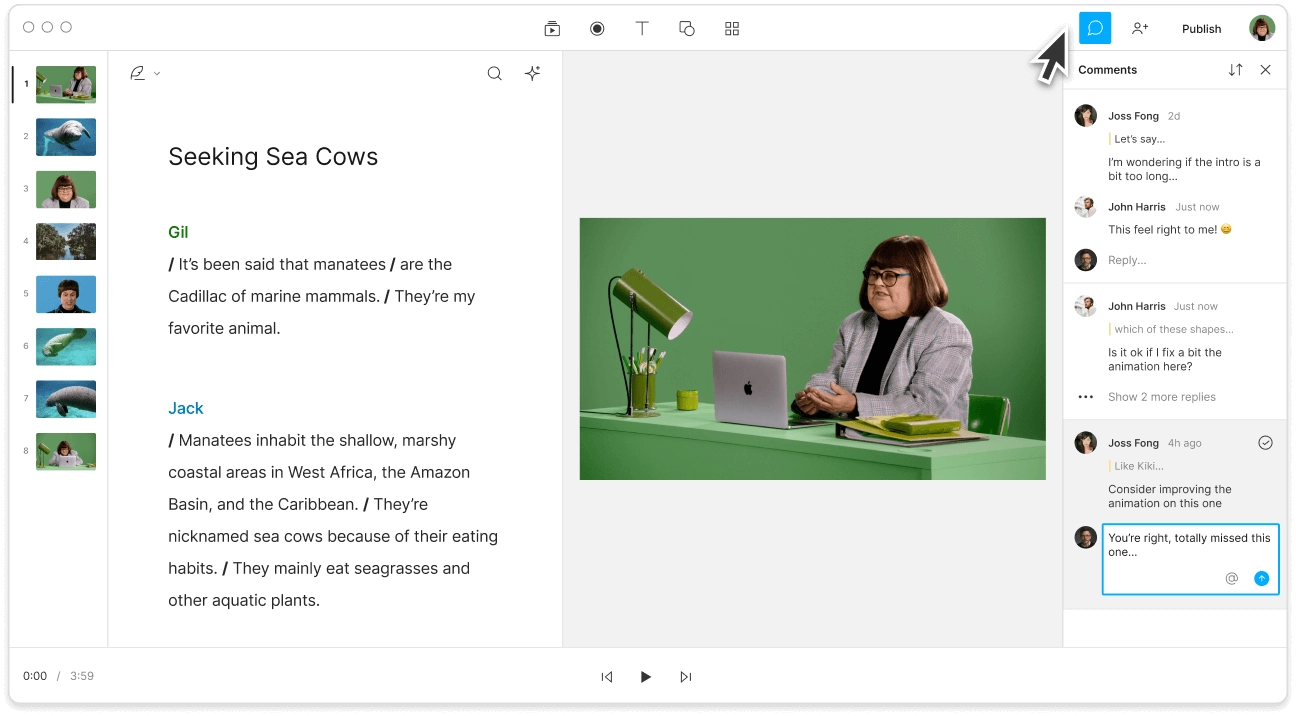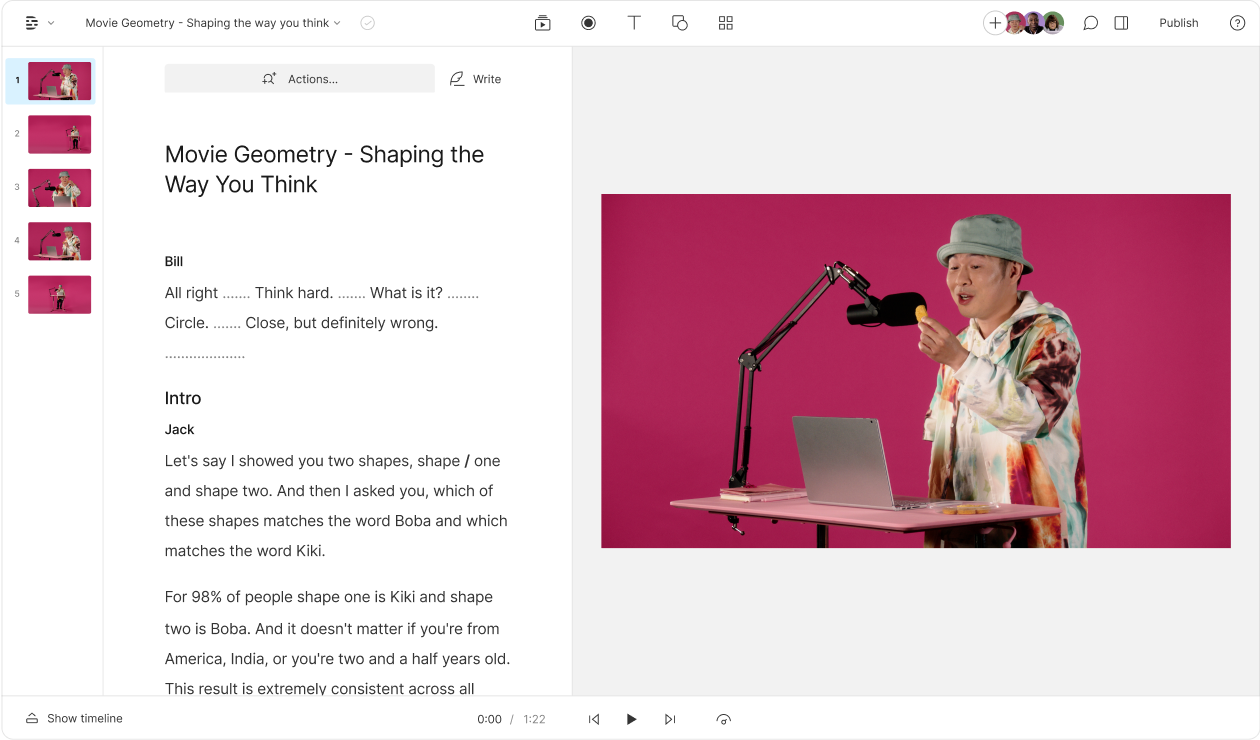What type of content do you primarily create?




Editing video is one of those things that sounds glamorous until you’re ten hours deep, squinting at an endless timeline wondering why your clip keeps jumping out of sync.
And sure, traditional enterprise tools have their benefits, but they also demand the kind of patience and training most teams just don’t have time for.
Enter Descript: a video editing tool that lets you edit videos like you edit a doc. It’s fast, it’s weirdly simple, and it’s changing how teams make content. But is it right for your team? Let’s find out.
The learning curve (or: how fast can you make something that doesn’t suck?)
Descript:
Editing in Descript feels… suspiciously easy. You edit words, not waveforms. You can cut out “ums” and awkward pauses with one click. It’s so intuitive that non-editors, marketers, comms folks, your boss who still double-clicks links, can make a clean video in minutes.
Traditional tools:
Powerful, yes. But also overwhelming. There are panels for color, audio, effects, metadata, and that’s before you even drag in your footage. If you’ve ever Googled “why is my Premiere export green,” you know.
Verdict:
If your team needs to make great-looking videos fast, Descript wins. If you’re chasing a Cannes Lion, maybe not.
Collaboration without the chaos
Descript:
Think Google Docs, but for video. Everyone can comment, edit, or approve without exporting, re-uploading, or sending “final_final_v8.mp4.” It’s collaborative, cloud-based, and borderline magical when you’re working across time zones.

Traditional tools:
Yes, Adobe has Team Projects. And yes, they sort of work. But setup can feel like defusing a bomb, and version control nightmares are real.
Verdict:
If your workflow involves multiple people, writers, editors, reviewers, and that one exec who always wants “just one more change,” Descript will save your sanity.
Creative control (or: the art vs. the deadline)
Descript:
You can record, edit, add captions, clean audio, clone your voice, and even generate B-roll with AI. But Descript’s strength isn’t in visual effects or 3D transitions; it’s in storytelling—because you edit from the transcript, your entire message is there in front of you, ready to be molded to your will. It’s for teams who care more about getting a clear, sharp message out than about tweaking pixel gradients.
Traditional tools:
Total creative freedom. Every keyframe, every color grade, every sound effect. It’s the difference between writing a book and editing a paragraph. But that level of control takes time, and skill.
Verdict:
If you’re producing high-end branded films, traditional tools are still your friend. If you’re making content every week that needs to look good and go live now, Descript’s your shortcut.
Price, hardware, and the whole “enterprise” thing
Descript:
Runs in the cloud, on pretty much any computer. Plans start low, and scaling across a team is easy. Plus, no need for fancy GPUs or software bundles. You can literally edit on your laptop in a coffee shop—responsibly, of course.
Traditional tools:
You’ll need licenses, hardware, storage, and probably an IT person who can decode the words “render cache.” Costs scale fast. It’s an investment—sometimes worth it, sometimes not.
Verdict:
If your team’s budget matters (and whose doesn't?), Descript offers pro results without the enterprise price tag.
So… which fits your team?
Go with Descript if:
- You need speed, simplicity, and collaboration.
- You make podcasts, training videos, explainers, social clips, or internal comms.
- You care about getting your story out, not obsessing over codecs.
Stick with traditional tools if:
- You’re a professional post-production team.
- You need granular creative control, heavy effects, or film-grade color work.
- You already know what a LUT is and why you should care.
The real answer: you might need both
Honestly? The best teams mix the two. Descript gets you from idea to draft, fast. Traditional tools polish the final cut. That hybrid workflow lets you move like a startup but finish like a studio.
Editing is never going to be effortless. It’s messy and unpredictable, and that’s the point. Tools like Descript just make the hard parts a little easier, so you can spend more time on what actually matters: making something you’re proud of.
Ready to get started? Contact our enterprise sales team today.























%201.svg)





